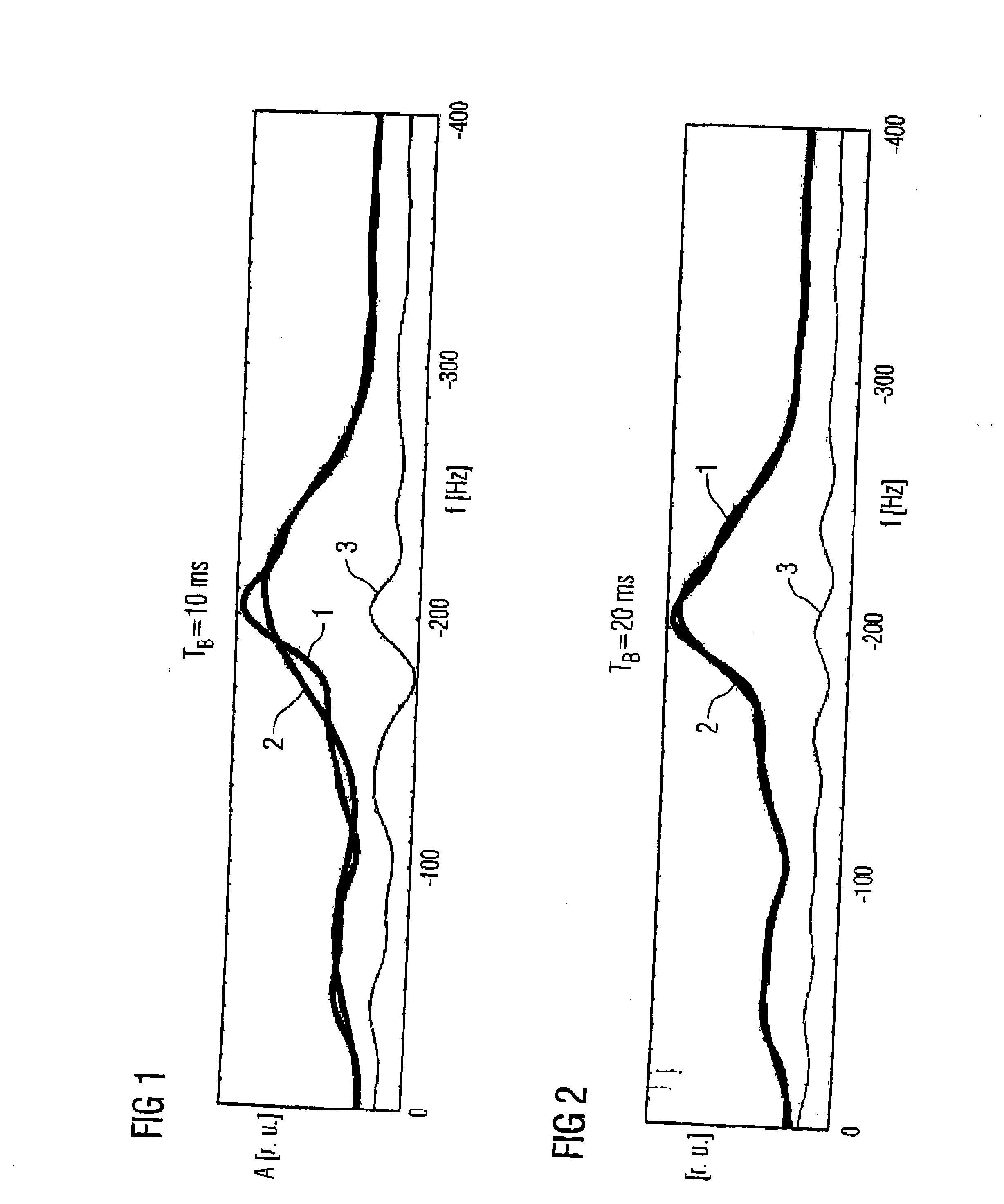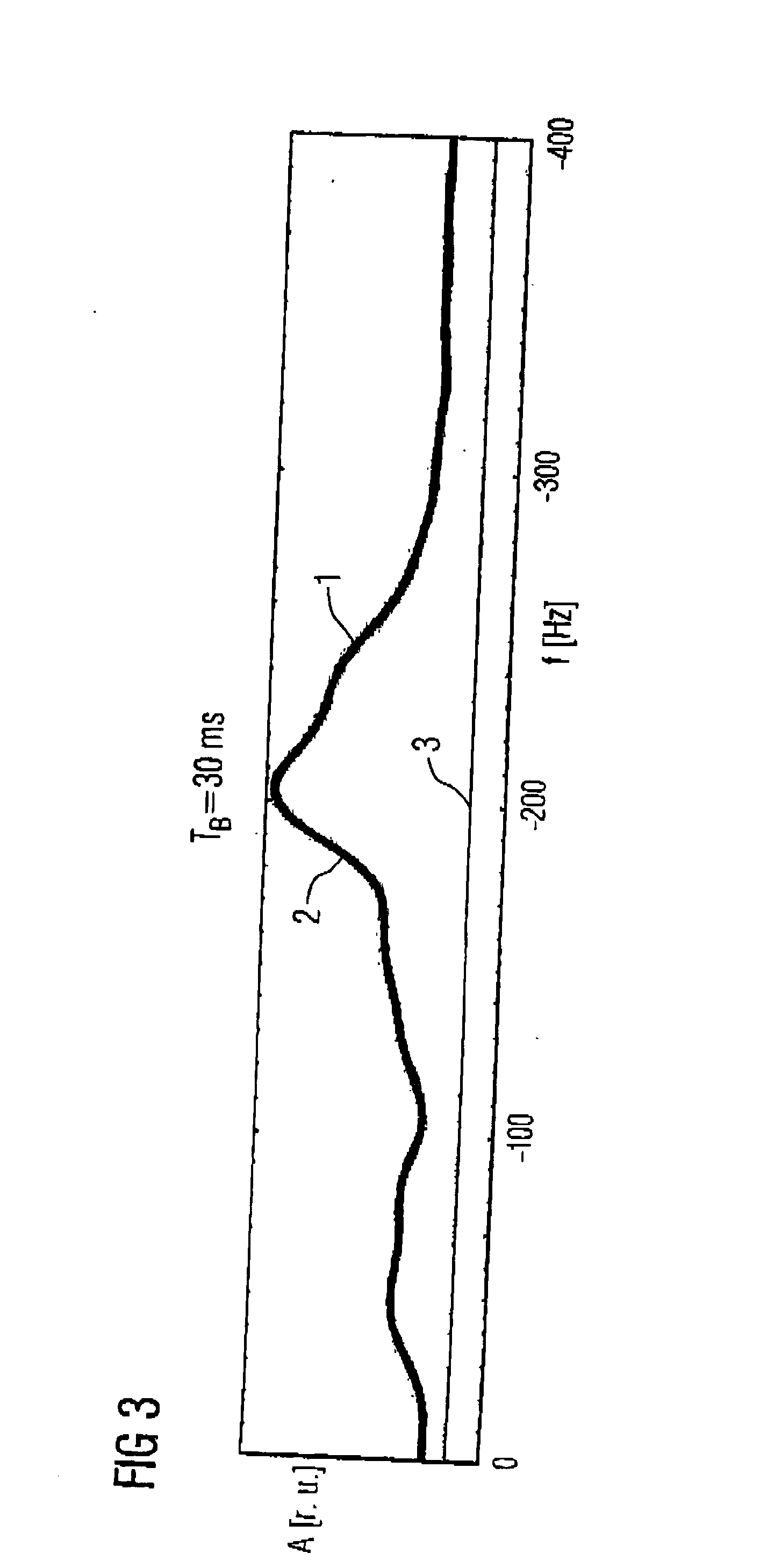Method for evaluating magnetic resonance spectroscopy data using a baseline model
a baseline model and magnetic resonance spectroscopy technology, applied in the field of magnetic resonance spectroscopy data evaluation, can solve the problems of reducing the signal-to-noise ratio of the modeled magnetic resonance signal portion, affecting and limiting the parameterization of voigt lines and model spectra to special applications, so as to improve the smoothness of the baseline and optimize the baseline modeling
- Summary
- Abstract
- Description
- Claims
- Application Information
AI Technical Summary
Benefits of technology
Problems solved by technology
Method used
Image
Examples
Embodiment Construction
[0031] A magnetic resonance spectroscopic examination of a tissue provides a damped, nuclear magnetic resonance signal (MR signal), what is known as the free induction decay (FID) signal, oscillating periodically with the Lamour frequency, The Fourier-transformed FID signal is generally designated as a resonance curve, but the term absorption spectrum also has become common in MR spectroscopy with for this curve. Below, the representation of the nuclear magnetic resonance signals in the time domain is designated as an MR signal, and the representation of the nuclear magnetic resonance signals in the frequency domain is designated as a resonance curve.
[0032] For a digital representation of an MR signal, it is sampled with at least double the Lamour frequency, such that it is available as an MR data set for extensive further processing. In the following the terms MR signal and MR data set are used synonymously, since digital processing, meaning evaluation of a nuclear magnetic resona...
PUM
 Login to View More
Login to View More Abstract
Description
Claims
Application Information
 Login to View More
Login to View More - R&D
- Intellectual Property
- Life Sciences
- Materials
- Tech Scout
- Unparalleled Data Quality
- Higher Quality Content
- 60% Fewer Hallucinations
Browse by: Latest US Patents, China's latest patents, Technical Efficacy Thesaurus, Application Domain, Technology Topic, Popular Technical Reports.
© 2025 PatSnap. All rights reserved.Legal|Privacy policy|Modern Slavery Act Transparency Statement|Sitemap|About US| Contact US: help@patsnap.com



